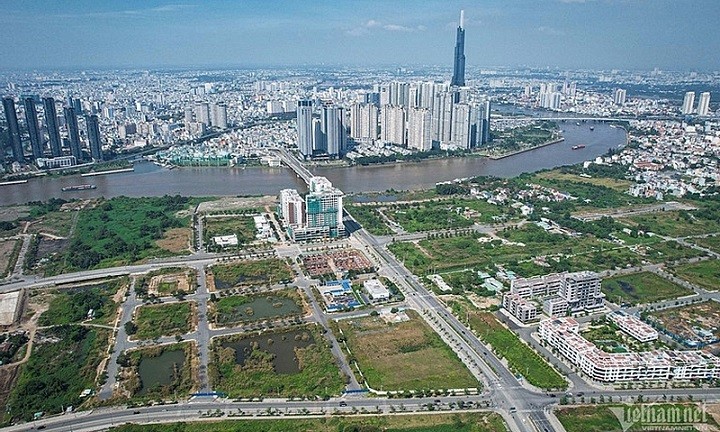 |
| The real estate market in general and land in particular are forecast to face difficulties in 2024, as investment sentiment has yet to show signs of positive recovery. (Source: Vietnamnet) |
The Government issues new regulations on land valuation.
On February 5, the Government issued a Decree amending and supplementing a number of articles on land prices. Four methods of land valuation include:
The comparison method is implemented by adjusting the price of land plots with the same purpose of use, with certain similarities to the land plots transferred on the market or land auctions that have fulfilled financial obligations. The method is to analyze and compare the factors affecting land prices after excluding the value of assets attached to the land, to determine the price of the land plot.
The Government stipulates that the comparison method is applied when there are at least 3 land plots with the same purpose of use and certain similar factors.
The income method is implemented by taking the average annual net income per land area and dividing it by the average interest rate on savings deposits in Vietnamese Dong, with a term of 12 months at commercial banks. The condition is that these banks are owned by the State with more than 50% of the charter capital or total number of voting shares. The period for calculating the average interest rate is 3 consecutive years, calculated up to the end of the most recent quarter with data before the valuation date.
This method is used to value agricultural and non-agricultural land plots that are not residential land and do not meet the conditions for applying the comparative method.
The surplus method is to take the total estimated development revenue minus the total estimated development cost of the land plot, land area on the basis of the most effective land use (land use coefficient, construction density, maximum number of floors of the building). This method is used to value land plots for investment projects that do not meet the conditions for comparison, income but can estimate the total development revenue and total development cost of the project.
The land price adjustment coefficient method is to take the land price in the land price list and multiply it by the adjustment coefficient. The adjustment coefficient is issued by the provinces and cities, through comparison with the common land price on the market.
Compared to the regulations from 2014, the Government has removed the land valuation deduction method to comply with the revised Land Law that was just passed by the National Assembly in mid-January.
The new Decree stipulates that the People's Committee at the provincial or district level will decide on specific land prices according to the provisions of the Law on Organization of Local Government. The Department of Natural Resources and Environment is responsible for assisting the People's Committee at the same level in determining specific land prices.
Land market declines
According to data from the Vietnam Association of Realtors (VARS), the land market is no longer as "hot" as it was in the past. Land products have experienced many price reductions, with losses of up to 30-40%, but are still difficult to liquidate.
According to a recent report on land market developments by the Institute of Construction Economics under the Ministry of Construction, the secondary supply of land in 2023 will decrease significantly compared to the previous year.
Of which, the secondary supply of project land in 2023 compared to 2022 in Hanoi decreased by about 46.4%, Ho Chi Minh City decreased by 56.3%, Da Nang decreased by 44.5%, Binh Duong decreased by about 45.3%, Hai Phong decreased by about 58.6%.
In addition, the land transaction situation in 2023 is also quiet. The secondary transaction volume of project land in Hanoi decreased by about 45.4%, Ho Chi Minh City decreased by 60.1%, Da Nang decreased by 49.4%, Binh Duong decreased by 48.1%, Hai Phong decreased by 30.3%, Dong Nai decreased by 59.4%.
Secondary land transaction prices in 2023 tend to decrease by about 10-15% compared to 2022 and decrease significantly in some localities such as Dong Nai, Khanh Hoa, Da Nang, and Ho Chi Minh City.
According to the above report of the Institute of Construction Economics, the organization of project land auctions has been re-implemented in many localities in the last quarter of 2023. Although the winning auction price is not much different from the starting price, this is also considered a positive signal for the market when purchasing power has shown signs of improvement.
A market report from a research unit said that the land market recorded a sharp decline in search demand in 2023. Specifically, the number of land searches in 2023 decreased by 45% compared to 2022, especially project land. Compared to the peak of the "land fever" in March 2022, land in the southern provinces decreased by 71%.
Difficulties in accessing capital and trust in investors are considered to be certain barriers in customers' decisions to own real estate. Primary prices recorded a decrease of 10-13% compared to 2022, secondary prices recorded a decrease of 15-30%, the decrease was in the group of customers using loans, large-scale projects with incomplete infrastructure - legal.
Despite the gloomy developments, according to the Institute of Construction Economics, the transaction situation is still not expected to be vibrant. Low liquidity in 2023 and investors' cautiousness in making investment decisions will make the 2024 land market still need more time to recover.
The new Real Estate Business Law’s tightening of land subdivision and sale regulations may impact supply, buyer sentiment, and prices in this segment in the coming time. Demand for and transaction prices for large plots of land are expected to continue to decline.
On the contrary, for small plots of land, liquidity will improve and secondary transaction prices may increase slightly compared to 2023.
Also commenting on the land market, VARS predicts that the supply of this segment will be scarce in 2024 when new Law policies can change the game in this market. The scarcity of supply can push land prices up by about 5-7% compared to 2023 in large cities. Meanwhile, developed areas with well-developed infrastructure tend to remain stable.
According to a survey at the end of 2023 by a Market Research Center, of the 63% of people with real estate needs in 2024, most of those with real estate needs are interested in apartments, land and residential houses.
A survey of homebuyers' psychology conducted by a research unit at the end of 2023 showed that land plots are leading the real estate type of interest and have a high rate of waiting to buy at the bottom. This fact shows that land plots are still a product welcomed by the market. However, the land plot market is forecast to be difficult in 2024, when investment psychology has not shown signs of positive recovery.
Recommendations to resolve legal issues in Circular 22
According to the Ho Chi Minh City Real Estate Association (HoREA), although it has initially helped future home buyers feel more secure, legal problems with Circular 22/2023/TT-NHNN still remain.
 |
| The above reality shows that land is still a product welcomed by the market. (Photo: Hoang Ha) |
HoREA has just issued Document No. 23/2024/CV-HoREA welcoming the State Bank (SBV) to affirm that the regulations in Circular 22/2023/TT-NHNN do not restrict the rights of organizations and individuals to buy future housing, and are not contrary to current regulations.
Accordingly, the Association welcomes the State Bank of Vietnam's sending of "Some information related to regulations on capital safety ratio for banks and foreign bank branches" affirming that it does not restrict the rights of organizations and individuals to buy future housing, and is not contrary to current regulations.
However, according to HoREA, although initially helping future home buyers feel more secure, Circular 22/2023/TT-NHNN still has legal problems.
Specifically, at Point a, Clause 11, Article 2 of Circular 41/2016/TT-NHNN (amended and supplemented at Clause 1, Article 1 of Circular 22/2023/TT-NHNN) only provides regulations applicable to cases of commercial housing "completed for handover", i.e. "available" commercial housing, but does not include cases of credit loans to buy commercial housing "not completed for handover", i.e. "future-formed" commercial housing.
According to HoREA, the concept of “completed house for handover” cannot be interpreted to include “future housing” to be accepted by commercial banks as collateral for loans to buy that house.
Furthermore, the announcement of the State Bank confirmed that “Circular 41/2016/TT-NHNN regulating the capital safety ratio of commercial banks and foreign bank branches is not a document guiding credit granting operations of credit institutions”.
But in fact, Circular 41 (amended and supplemented in Clause 1, Article 1 of Circular 22/2023/TT-NHNN) contains legal regulations not related to "regulations on capital safety ratio of commercial banks and foreign bank branches", but related to "credit granting operations of credit institutions".
Specifically, Clause 11, Article 2 stipulates "loans secured by real estate for individuals to buy houses that meet the conditions", similar to the provisions in the circulars of the State Bank "guiding credit granting operations of credit institutions".
HoREA believes that if Circular 41 only regulates "the capital safety ratio of commercial banks and foreign bank branches", it is not necessary to have legal regulations regulating the "conditions" of "a home mortgage loan is a loan secured by real estate for individuals to buy a house" in Clause 11, Article 2 because there are already circulars of the State Bank guiding credit granting operations of credit institutions".
Along with that, according to the Association, the document "Some information related to regulations on capital safety ratio for banks and foreign bank branches" recently issued by the State Bank is not a legal document like circulars, so it is only valuable for providing information.
Meanwhile, banks and foreign bank branches must base on the Law on Credit Institutions and Circulars of the State Bank to perform credit granting operations.
Faced with the above difficulties, the Association said that it is necessary to soon amend and supplement Circular No. 22/2023/TT-NHNN to support the real estate market in the process of recovery and development.
Is it possible to transfer land that has been announced for revocation?
Many people wonder, if there is a notice of land reclamation but no decision on land reclamation, the parties to the transaction know but still voluntarily carry out the transaction, is it allowed to transfer and register the land and why?
The Ministry of Natural Resources and Environment responded to this issue as follows:
Current land law does not have specific regulations on whether or not land users' rights can be exercised in cases where there is a notice of land recovery.
According to the provisions of Clause 1, Article 6 of Law No. 35/2018/QH14 amending and supplementing a number of articles of 37 Laws related to planning, in cases where there is an annual land use plan at the district level, land users in the area must change the land use purpose and recover land according to the plan to continue to exercise the rights of land users.
The order and procedures for transferring land use rights are stipulated in Article 79 of Decree No. 43/2014/ND-CP, according to which the Land Registration Office is responsible for sending cadastral information to the tax authority to determine and notify the collection of financial obligations in cases where financial obligations must be fulfilled according to regulations before making adjustments and updating changes to the cadastral records; land users must fulfill financial obligations according to regulations.
Do not issue Certificates of land use rights, house ownership rights and other assets attached to land when there is a notice of land recovery or a decision to recover land by a competent State agency to ensure compliance with the provisions of Clause 6, Article 19 of Decree No. 43/2014/ND-CP dated May 15, 2014 of the Government detailing the implementation of a number of articles of the Land Law.
Source










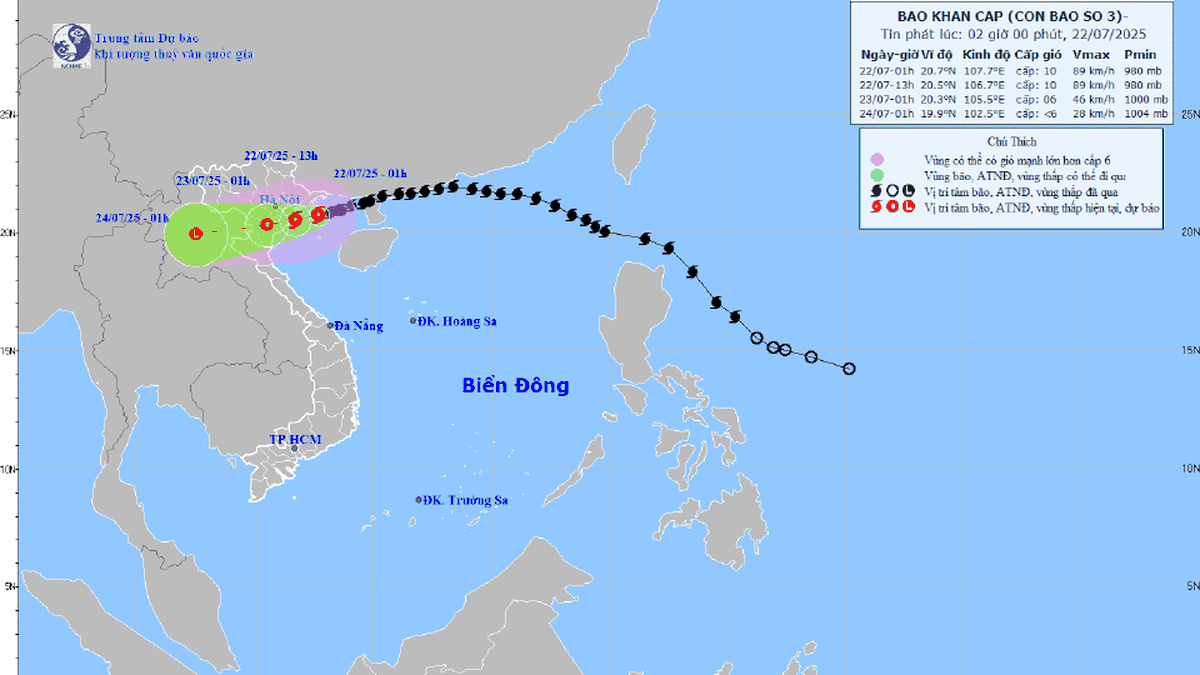
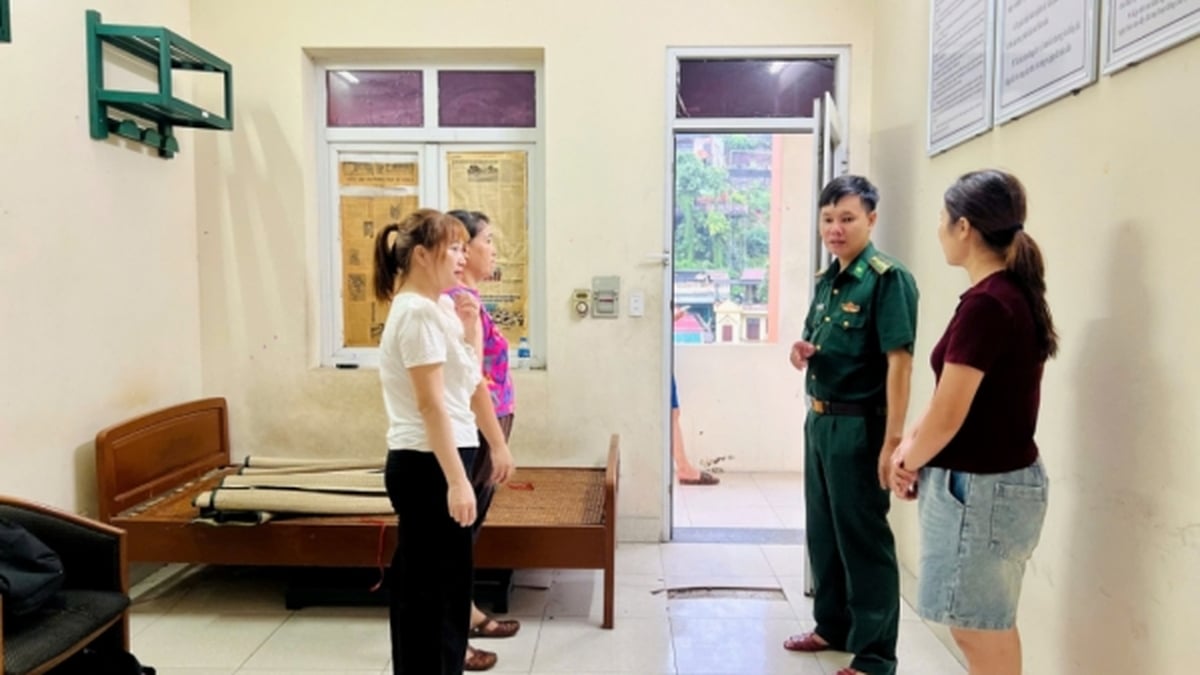

















![[Photo] National Assembly Chairman Tran Thanh Man visits Vietnamese Heroic Mother Ta Thi Tran](https://vphoto.vietnam.vn/thumb/1200x675/vietnam/resource/IMAGE/2025/7/20/765c0bd057dd44ad83ab89fe0255b783)










































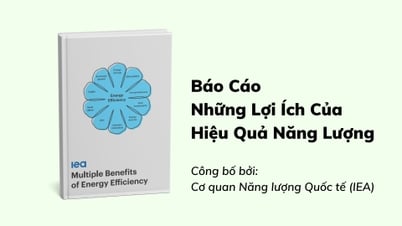





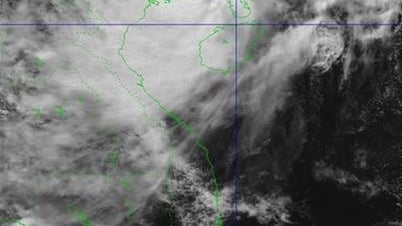























Comment (0)